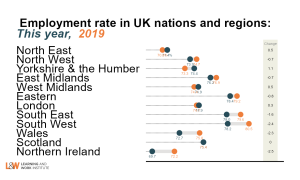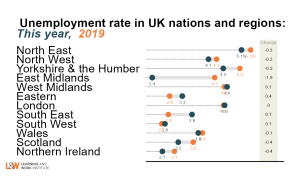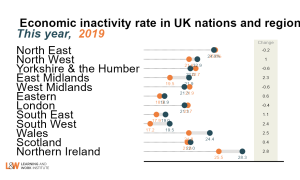August 2022
Stephen Evans, Chief Executive of Learning and Work Institute, said:
1. The cost of living crisis is deepening, with rising inflation meaning we saw the biggest quarterly drop in real regular earnings this century and worse perhaps to come
The latest data show average regular earnings grew by 4.7% in the year to June 2022, though bonuses for some pushed headline earnings growth up by 5.1%. With the Consumer Price Index rising by 9.4% in the year to June 2022, this means that real regular earnings have fallen over the year and are below pre-pandemic levels. In June, regular pay in real terms fell by 2.8%. The cost of living crisis is likely to deepen even further in the months ahead, with the Bank of England forecasting inflation to rise to 13% this year.
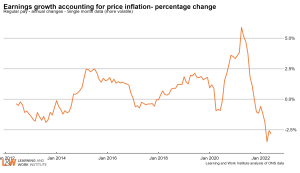
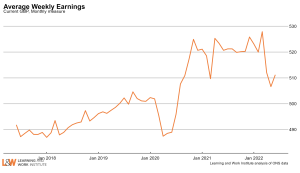
2. Employment rose last month, but the employment rate remains below pre-pandemic levels due largely to people leaving the labour market
Employment rose by 160,000 in April to June 2022 compared to the previous quarter but remains 281,000 lower than before the pandemic. The timelier but less comprehensive measure of PAYE employees increased by 73,008 in July 2022 compared to the previous month and is 649,230 above its pre-pandemic level.
Unemployment increased by 35,000 in April to June 2022 compared to the previous quarter, and short-term unemployment (under 6 months) rose by 42,000 compared to the previous quarter.
Economic inactivity increased by 26,000 compared to the previous quarter and is still 521,000 higher than pre-pandemic.
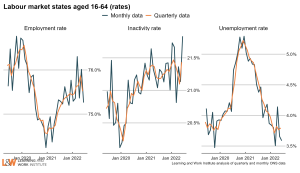
The number of people claiming unemployment-related benefits remains 238,000 above the survey measure of unemployment, despite a fall of 10,500 in July 2022 compared to the previous month.
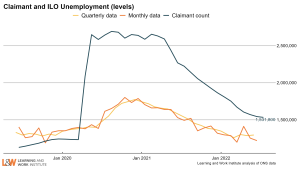
3. Employers are hiring at record levels, but there are fewer potential workers for employers to recruit, with 527,000 over 50s leaving the labour market since the pandemic started
Vacancies are at record levels, but despite record hiring employers are struggling to meet all their needs. The latest data shows 1.9 million people either started work or changed jobs in the three months to June 2022, a slight fall on the previous quarter but still historically high. The proportion of people moving from out-of-work to in work remains relatively flat (though at high levels in absolute terms), with only 6% of economically inactive people moving into work in the last quarter little changed on previous years.
Recruitment is more challenging for employers because of rises in economic inactivity – people leaving the labour market. This has been primarily driven by those aged 50 and over and people with long-term health problems and disabilities. There are 2.39 million people economically inactive due to long-term sickness or disability, up 9.3% in the last year.
This is a key challenge – for the Government to support people in this group who want to work and for employers to think about recruitment and job design that will meet their needs. The number of 50-64 year olds who are economically inactive increased by 16,000 in the last quarter, although the number of over 64s who are economically inactive decreased by 125,000 in the last quarter.
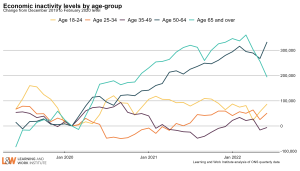
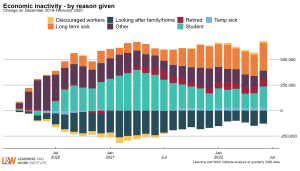
4. Employment rates for disabled people have increased marginally, but remain 29 percentage points below that for non-disabled people
Employment rates for disabled people increased by 0.6 percentage points to 53% in April-June 2022 compared to the previous year. However, they remain around 29 percentage points below that for non-disabled people with that gap little changed in the last five years. Meanwhile, employment rates for people from ethnic minorities increased by one percentage point in same time period, while employment rates for white people fell by 0.3 percentage points, meaning that employment rate gap narrowed.
5. The employment picture varies across the country
Employment rates are now higher in the North East, Yorkshire and the Humber, the West Midlands, London than pre-pandemic 2019 levels, but remain lower in other regions and countries, apart from Scotland where employment rates are approximately the same as they were in 2019. Economic inactivity is highest in Northern Ireland, the North East and Wales, and lowest in the South West, South East, and Eastern England. This varying picture, which is even greater at sub-regional level, shows the importance of tackling inequalities so everyone has a fair chance in life wherever they live.
